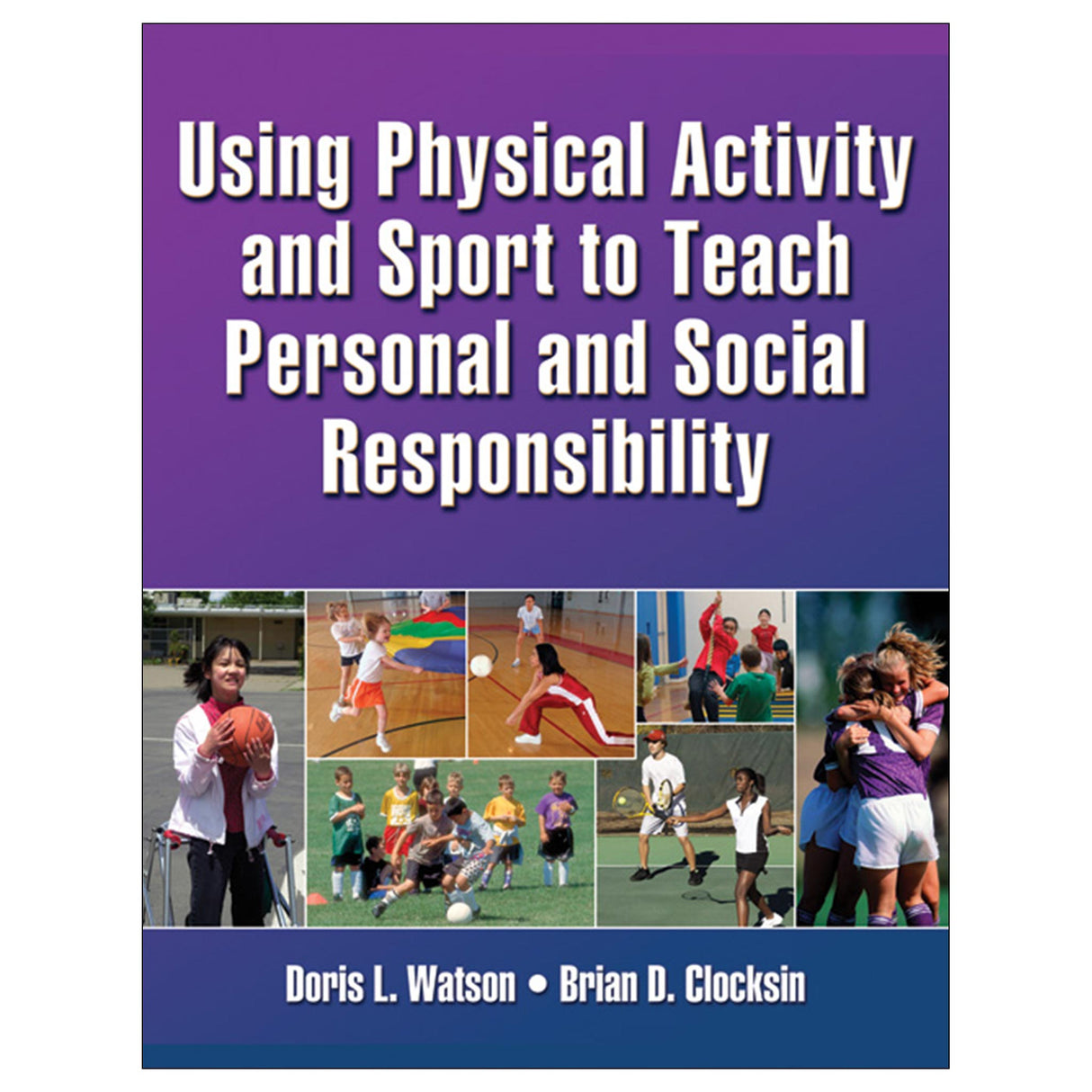Using Physical Activity and Sport to Teach Personal and Social Responsibility
Author: Doris L. Watson, Brian D. Clocksin
$29.00 CAD
Using Physical Activity and Sport to Teach Personal and Social Responsibility shows you how to implement a character education program in your school or community organization. Authors Watson and Clocksin offer an ideal companion text to Don Hellison's classic Teaching Personal and Social Responsibility Through Physical Activity. In this text, Watson and Clocksin provide the practical tools for applying Hellison’s Teaching Personal and Social Responsibility (TPSR) model to sport and fitness activities.
You’ll find samples of units, lessons, and assessments incorporating the TPSR model in teaching basketball, golf, soccer, volleyball, team handball, tennis, yoga, fitness, and adventure education. An excellent text for the novice teacher, Using Physical Activity and Sport to Teach Personal and Social Responsibility also offers information and techniques on facilitating youth development in a variety of movement settings and with diverse populations.
This text begins with an introduction to the TPSR model that prepares you for practical applications to follow. Part I of the text presents the history and evolution of the TPSR model. It also discusses how TPSR meets current National Association for Sport and Physical Education (NASPE) standards for physical education instruction. Next you’ll find an examination of current research on motivating students in a physical activity context, creating positive learning climates, and facilitating student-centered learning. Part I concludes with a look at current literature demonstrating the effect of the TPSR model in the sport and physical activity setting.
Part II centers on methods for teaching life skills and values through nine sports and physical activities. Each of the nine chapters is organized using the TPSR lesson plan format (awareness talk, lesson focus, group meeting, and reflection) in connection to each developmental stage (1, 2, and 3). It includes a summary and recommendations for additional readings. For each sport or physical activity, you’ll find suggested activities for teaching sport skills and TPSR skills in tandem, examples of guided questions, and information on skill assessments. Each chapter includes easy-to-reference tables examining possible instructional strategies to use (such as command, reciprocal, inclusion, and self-check), teaching considerations for each strategy, and how each strategy can guide your students in accomplishing TPSR goals at their developmental level.
Part III of this resource includes a chapter featuring profiles of teachers and youth workers who are using the TPSR model effectively. The book concludes with a look at how teaching personal and social responsibility through sport can support the creation of young leaders in school and community settings.
Using Physical Activity and Sport to Teach Personal and Social Responsibility offers undergraduates, teachers, and youth workers a bridge to connect Hellison’s TPSR model to their own practices. More than a text on physical education or sport instruction, this book can help you turn sport and physical activity into opportunities to create deeper, more positive connections with students and nuture their personal and social growth.
Audience
Textbook for physical education teacher education (PETE) courses in methods or curriculum. Reference for youth leaders in recreation and community youth programs, including YMCAs and Boys and Girls Clubs.
Part I. The Foundation of the TPSR Model
Chapter 1. Introduction to the Personal and Social Responsibility Model
Chapter 2. What Works
Chapter 3. Creating a Positive Learning Environment
Part II. Using TPSR in Physical Activity and Sport Settings
Chapter 4. Adventure Education
Chapter 5. Volleyball
Chapter 6. Yoga
Chapter 7. Soccer
Chapter 8. Basketball
Chapter 9. Team Handball
Chapter 10. Golf
Chapter 11. Tennis
Chapter 12. Fitness
Part III. TPSR in Action
Chapter 13. In the Trenches
Chapter 14. What Matters in Youth Leadership





